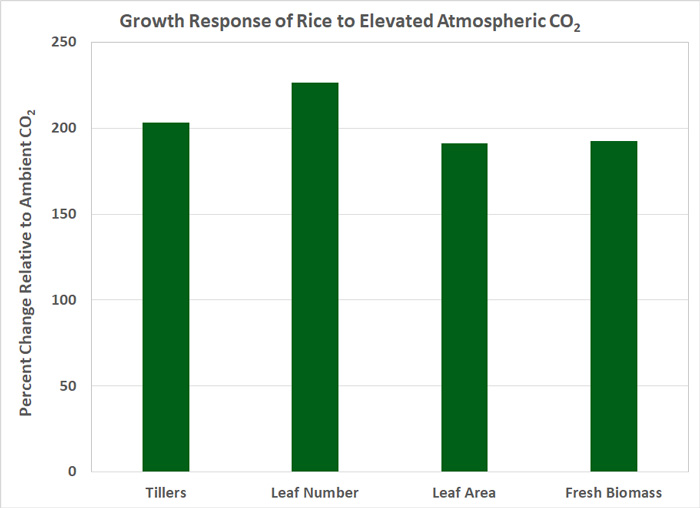| Tweet | Follow @co2science |
Paper Reviewed
Rahman, S., Duursma, R.A., Muktadir, M.A., Roberts, T.H. and Atwell, B.J. 2018. Leaf canopy architecture determines light interception and carbon gain in wild and domesticated Oryza species. Environmental and Experimental Botany 155: 672-680.
Given the amount of evidence showing that higher atmospheric CO2 concentrations improve the growth of plants, it is surprising that some still debate this truth. The latest study to demonstrate this fact comes from Rahman et al. (2018), who examined the impacts of rising CO2 levels on one commercial rice species (Oryza sativa, cv Doongara) and two wild species (Oryza meridionalis, cv Cape York and Howard Springs). The three cultivars were grown for 115 days in a glasshouse under controlled-environment conditions at either ambient (400 ppm) or elevated (700 ppm) atmospheric CO2 concentration.
According to the authors, elevated CO2 enhanced photosynthesis by 20-50% in the three rice genotypes. Additionally, as shown in the figure below, elevated CO2 approximately doubled the tiller number, leaf number, leaf area and fresh biomass of the rice plants. What is more, these enhancements occurred despite a decrease in the proportion of total leaf area intercepting light as a result of denser leaf canopies in the plants.
Once again, new research confirms what we have been reporting for over two decades here at CO2 Science: carbon dioxide is not a pollutant and rising atmospheric CO2 levels are greatly benefiting the terrestrial biosphere.

Figure 1. Growth response of rice to elevated atmospheric CO2 expressed as the percent change of a given parameter relative to that observed under ambient conditions. Plotted data are taken from the authors' Table 2.




